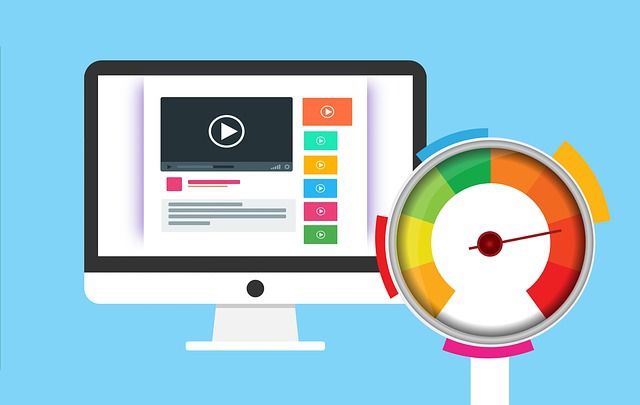7 Conversion Rate Optimization Strategies
While getting people to the site through tactics like Search Engine Optimization (SEO) and Pay-Per-Click (PPC) are great, the end goal is to get leads. If you aren’t getting leads, then your website is failing.
That is where Conversion Rate Optimization comes into play.
Having traffic is great, but you need to have website tactics that turn that traffic into leads for your business. We are experts in the industry, with over 15 years of sales lead generation experience. To help you, we have put what we learned in that time into this blog with all of the conversion rate optimization strategies that you need for a successful website:
1. Set a Clear Conversion Goal
Your first step to raising your conversion rate is simply zeroing in on what your conversion goal is. It is tempting to see how many conversions you have gotten in the last month or 90 days or year and say that you want to increase it a certain amount in the next period of the same length.
This is not a good metric and will cause you to make inaccurate decisions about your conversion rate optimization going forward.
Instead, understand that your conversions are intertwined with website traffic. Set a goal that looks at how many more conversions you get per X amount of traffic. This will give you a much more accurate look at how well your website is optimized for converting traffic into leads.
2. Make Your Call-to-Actions Simple, Plentiful, and Engaging

Having the right call-to-actions on your website is key to having successful conversion rate optimization. Consider these three metrics when planning your CTAs:
- Simplicity: People are moving quickly when they’re on your site. Ensure that all of your call-to-actions can be observed and taken in quickly.
- Plentiful: Many people have become blind to ads, and may not see your banners or buttons because of this. To combat this, make sure you have plenty of call-to-actions across your site.
- Engaging: By making your CTAs clear that they can be clicked and draw people in with colors that pop out, you can attract the attention of even the most difficult visitors.
Be sure to update your CTAs often. People are always coming up with new, more effective theories of design. People are also learning to look past those with an old design. Keep your website fresh, including your call-to-actions.
3. Streamline Your Forms but Keep Them Effective
The age-old question of website building: “How many fields do I include on my form”.
Some want as many fields as possible to arm their sales staff with as much information as possible. Others want as small of a form as possible to make the process easy for potential clients and customers.
The truth is that there is no right answer.
Yes, fewer fields on your form tend to lead to a higher conversion rate, and you should pursue this. However, you have to be considerate of which fields you remove. There have been many cases where a website removed fields from their form and saw a drop in their conversion rate.
Why?
Because they removed important fields. These fields provided information that was necessary for the company to give good service to potential customers. By taking them out, website visitors were not entirely sure that they would be getting accurate service as a result.
In the end, you do want to keep your fields to a minimum, but we want to be clear that you should remove fields conscientiously to get the best conversion rate optimization results.
4. Build Automated Marketing Strategies
When putting together an automated marketing strategy, you have to consider how it ties into your business. Automated marketing is far from a one-size-fits-all tactic.
The first step is determining your sales process. Some services and products require more consideration from users. The more consideration, the more steps that you have to take with your automated marketing. In this case, it is best to provide information and show that you are available for any questions that you have, never letting them forget about what you offer.
An incredibly effective automated marketing strategy is the use of Abandoned Cart Emails. It is much more difficult to get new users to your site than it is to get people who have visited your site before. This is even more so the case if they had specific items picked out that they didn’t end up buying. A nudge from an email from you may be all it takes for them to finish the transaction.
If you want to really increase conversions from these, offer a promo in your emails.
5. Use Live Messaging to Guide Visitors
Something that can deter visitors from engaging with your site is simply confusion. If someone gets to your site and has a question, but no way of having it answered, they will most likely go back to Google and find a new page that is clearer for them.
In order to stop this, you have to be there for them. By using an online customer service software, like LiveChat, you are able to be there for them when they need you.
If your customer service is good and you provide them a positive experience, it is much more likely that they become a lead.
Many avoid using a feature like this to avoid being an annoyance to those that don’t need help. A simple way to work around this is to put a delay on the software so that your live message option only pops up after the visitor has been on the page for a certain amount of time. This means that those who came for one specific purpose, such as high-intent visitors, don’t have to see the chat option.
6. Consider Removing the Navigation Bar on Landing Pages
It may sound odd, but removing your navigation bar in certain spots may help your website land more leads.
Having the navigation bar appear on every site is often seen as best practice for your website, but research via A/B testing from the company Yuppiechef may say otherwise. For context, they are an online store based in South Africa that sells premium kitchen tools worldwide. They did this test on a Wedding Registry landing page with two pages that are identical other than one having a navigation bar and the other not having one. These pages had a mix of traffic sources ranging from paid ads to organic traffic.
Their results were decisive. The page with no navigation bar had a 100% higher conversion rate. This page had a 6% conversion rate compared to the 3% conversion rate of the page with a navigation page. With results like this, we have to suggest that you at least give it a try. Of course, if you don’t see results, you can simply add the navigation bar back.
7. Keep Your Site Fast

More so and more so, speed is the key to a successful website. When people set out to do something, they want it done quickly. Navigating your website and deciding whether or not to use your services or buy your product is no exception. According to research from iFactory Digital, speed can have a drastic effect on your conversion rate, with a 7% drop coming as a result of a just 1-second delay. To look into how fast your site is, visit PageSpeed Insights. You can see a variety of scores for how your site is performing along with tips to improve your site. Keep in mind that the numbers on the scores are not particularly accurate. However, they are consistent from site to site. We suggest looking at your scores along with your competitors’ scores to see how your site matches up.
We have a few recommendations to improve your site speed:
- W3 Caching: This tool is a must-have for optimizing the caching settings of your website. Keep in mind that this requires changes to tailor it to your website.
- Minifying: A lot of code isn’t necessary for computers. By using a minifying tool, you can streamline your code to work fast.
- WebP Express: This tool shrinks images while keeping them at their best quality.
By utilizing these steps, you will be well on your way to having a lightning-fast website.
Final Thoughts
As you can see, there is a lot that needs to happen with your website to ensure that you are getting the most out of your traffic. No matter what skill level you may be when it comes to website building or management, we suggest speaking with the experts. With as many moving parts as there are on your website, the more eyes on your conversion rate optimization, the better.


